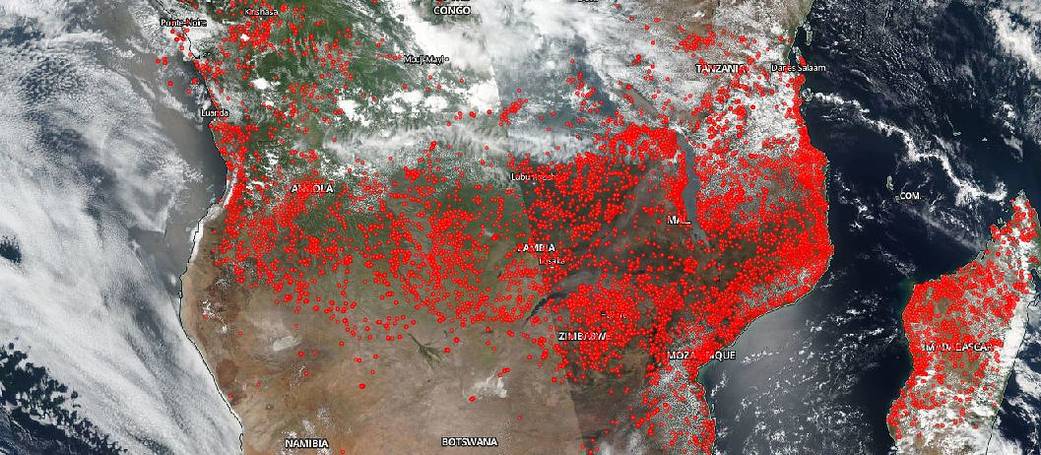Ten days after the initial image of fires in Central Africa posted on NASA.gov, this image taken by the Suomi NPP satellite on October 29, 2018 shows just as many if not more active fires in the same area. These fires are most likely the product of human activity rather than just random wildfires. At this time of year farmers use the agricultural method of “slash and burn” to clear fields after the harvest. This method uses little technology and as such is a more economical method to clear fields. The resulting layer of ash provides the newly-cleared land with a nutrient-rich layer to help fertilize crops. While fire helps enhance crops and grasses for pasture, the fires also produce smoke that degrades air quality. Although these fires cannot be definitively proven to be agricultural in nature from a satellite image, it is the most logical explanation given the information present.
NASA’s Suomi NPP satellite collected this natural-color image using the VIIRS (Visible Infrared Imaging Radiometer Suite) instrument on October 19, 2018. NASA’s Earth Observing System Data and Information System (EOSDIS) Worldview application provides the capability to interactively browse over 700 global, full-resolution satellite imagery layers and then download the underlying data. Many of the available imagery layers are updated within three hours of observation, essentially showing the entire Earth as it looks “right now.” Actively burning fires, detected by thermal bands, are shown as red points. Image Courtesy: NASA Worldview, Earth Observing System Data and Information System (EOSDIS). Caption: Lynn Jenner




























